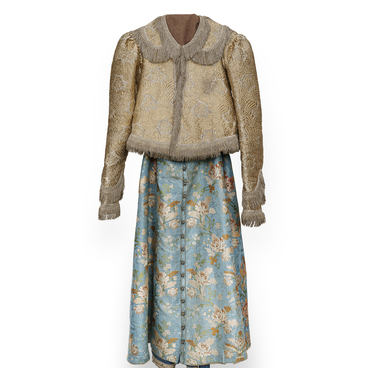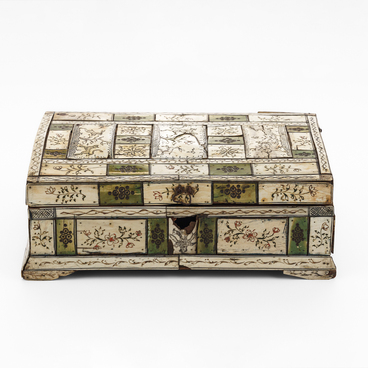In pre-Petrine Russia, all females, both noble ladies and peasant women, wore kokoshniks. Even in poor families, women owned festive headdresses, which were carefully preserved and passed from mother to daughter. Kokoshniks were worn only on special occasions, they were not part of everyday outfits.
In the early 18th century, Peter the Great ordered his subjects to abandon the traditional Russian clothing in favor of European dress. So, aristocratic women stopped wearing kokoshniks. However, peasant and urban women, as well as tradesmen’s wives, still preferred this traditional headdress.
Each governorate had its own unique kokoshnik design, but the most well-known style was a cap with a flat or curved base, to which a tall crest in the shape of a triangle or half-moon was attached. The crest was made from thick paper or canvas, which was then covered with expensive material. The front part was lavishly decorated with braids, beads, pearls, or other precious stones, as well as embroidery using gold and silver thread, foil, and other materials such as glass.
The back part of the headdress was particularly richly adorned with embroidery, covering the entire area with intricate patterns of various motifs, such as ears, tree branches, and flowers, as well as images of birds. The designs were varied and were often associated with wishes for good fortune, harmony, prosperity, and fertility. However, the embroidery itself was often hidden by a beautiful kerchief or a piece of fabric. This tradition was prevalent in many regions. It could be a delicate veil, shawl, or ubrus — a thick embroidered veil.
Women rarely sewed kokoshniks for themselves. They were usually made by craftswomen or artels, as well as workshops at monasteries.
In many governorates, a woman wore a kokoshnik for the first time at her wedding ceremony.
The kokoshnik presented in the Museum of Russian Heritage has the shape of a crescent. It is decorated with colored glass beads, and foil is used to make the beads shine brighter. The band is velvet, with a decorative overlay. The part of the kokoshnik that covers the forehead is adorned with gold braid and pieces of colored foil with elements of gold embroidery that imitates samite — a luxurious and heavy silk fabric.






